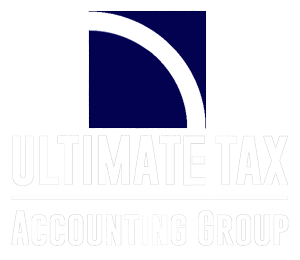Earned Income Credit - Two or More Qualifying Children
The earned income credit is a refundable credit for
low-income workers with earned income. The credit is
available for taxpayers with or without children. For 2013,
the maximum credit if you have two or more qualifying
children is $5,372. With three or more qualifying children
is $6,044.
Earned Income Credit - One Qualifying Child
The Earned
Income Credit is a refundable credit for low-income workers
with earned income. The credit is available for taxpayers
with or without children. For 2013, the maximum credit if
you have one qualifying child is $3,250.
Earned Income Credit - No Qualifying Children
The Earned
Income Credit is a refundable credit for low-income workers
with earned income. The credit is available for taxpayers
with or without children. For 2013, the maximum credit if
you have no qualifying children is $487.
Earned Income Credit - Fraudulent or Reckless Claim
You will
not be eligible for the Earned Income Credit if the IRS has
determined that you have previously claimed the credit
fraudulently or recklessly. A fraudulent claim results in a
10-year loss of eligibility. A reckless claim results in a
two-year loss of eligibility.
Earned Income Credit - Combat Pay
Although combat pay is
not included in income when calculating your federal income
tax, you have the option of including combat pay as earned
income when calculating the Earned Income Credit. You should
calculate your return both ways (including and not including
combat pay as earned income for Earned Income Credit
purposes) to determine which way gives you the more
advantageous result.
Coverdell Education Savings Accounts (Education IRAs)
An
education savings account can be established for a child
under the age of 18. Any individual (including the child)
can contribute to the account during the year if they meet
certain income limitations. The total annual contributions
per beneficiary are limited to $2,000. Withdrawals will be
tax-free when used to pay education costs (elementary
school, secondary school, or a post-secondary school such as
a college) for the beneficiary.
American Opportunity, Hope and Lifetime Learning Credits
There are two nonrefundable tax credits for payments made
for qualified tuition and related expenses for
post-secondary education. You may be able to claim American
Opportunity for $2,500; You may be able to claim a Hope
Credit of up to $3,600 for each eligible student. You may be
able to claim a Lifetime Learning Credit of up to
$2,000-$4,000 for each family.
Education Expenses - Tuition Payment Verification
Students attending eligible higher education institutions
need more than Form 1098-T, Tuition Payments Statement, if
challenged to prove paid educational expenses. Receipts from
the educational institution showing the amount actually paid
for tuition and fees are adequate for verification. Canceled
checks or bank statements are also good records. If payments
included amounts charged other than tuition and fees, you
should save a copy of billing documents from the school that
break down the charges individually.
Educator Expenses - Deduction
If you are an elementary
or secondary school teacher, instructor, counselor,
principal, or aide and you have worked at least 900 hours
during a school year, you may deduct the cost of books,
supplies, computer equipment (including software and
services), and other materials used in the classroom. You
may deduct up to $200 of these expenses directly against
your income, without itemizing deductions. Remaining
expenses can be deducted as a miscellaneous itemized
deduction on Schedule A, subject to the 2% of adjusted gross
income limit.
Tuition and Fees Deduction
Instead of claiming the Hope
Credit or Lifetime Learning Credit, you can claim a tax
deduction for qualified higher education expenses. You can
take a deduction of up to $4,000 for qualified tuition and
related expenses as adjustment to income, even if you do not
itemize your deductions. Certain restrictions apply.
Qualified Tuition Program
A Qualified Tuition Program
(QTP) allows you to prepay a student's college tuition or
contribute to a higher education savings account.
Contributions are not tax deductible, but distributions will
be tax-free if the distributions are used to pay for
qualified higher education expenses.
Employer-Provided Educational Assistance
You may be able
to exclude up to $5,200 on your return for employer-provided
educational assistance. The eligible education includes
undergraduate and graduate courses.
Student Loan Interest
You may be able to claim a
deduction of up to $2,550 for interest paid on a qualified
student loan. Only the amount of interest actually paid
during the year may be deducted. You cannot claim the
deduction in any tax year in which another taxpayer claims
you as a dependent. You do not need to itemize to claim this
interest. This amount is subject to a phase out, which
begins at $55,000 of income for a single person and at
$110,000 for a married couple filing a joint return.
Estate and Gift Taxes
You can generally
give money or property to another person without any tax
consequences provided the amount does not exceed $12,000 per
year. If this amount is exceeded, it must be reported on a
gift tax return. The unified credit effectively exempts from
tax the first $2,000,000 of such cumulative transfers of
gifts.
Electronic Filing
Electronic filing, or
IRS e-file, is the electronic transmission of your tax
return to the IRS. E-filing reduces the time it takes to
receive your tax refund and also reduces common errors such
as mathematical errors. Direct Income Tax & Accounting
offers free electronic filing with paid tax preparation.
Amended Returns
What happens if you
filed a tax return and later realize that you omitted income
or overlooked some deductions? You can amend your return by
filing Form 1040X, Amended U.S. Individual Income Tax
Return. Generally, you must file your amended return within
three years after the date you filed your original return.
You cannot change your filing status from Married Filing
Jointly to Married Filing Separately after the due date of
the original return.
Extensions - Filing
Do you need more
time to file? By filing an extension, you can generally
postpone filing your return until October 15. Filing an
extension does not give you additional time to pay any tax
you may owe. If you do not pay the tax due by April 15,
2014, you will accrue penalty and interest charges. Complete
IRS Form 4868, Application for Automatic Extension of Time
To File U.S. Individual Income Tax Return, to file for an
automatic six-month extension. If you file Form 4868, you
will have until October 15, 2014 to file your tax return.
Extensions - Electronic Filing
The IRS
offers electronic filing of extension applications. The IRS
will process Form 4868, Application for Automatic Extension
of Time to File U.S. Individual Income Tax Return, through
noon on April 15, 2014. Paper requests for extension must be
postmarked by April 15, 2014. By filing an extension, you
generally postpone the filing date of your return until
October 15, 2014.
Filing Status - Annulled Marriages
If
you obtain an annulment that declares your marriage never
existed, you are considered unmarried for this and any
previous tax years. You must amend your tax returns for all
the tax years not affected by the statute of limitations for
filing a return (usually three years) to show this change in
marital status.
Filing Status - End of Year
Your filing
status depends on whether you are married or unmarried on
December 31 of a tax year. If you live apart from your
spouse and meet certain tests you may be considered
unmarried for the entire year. If you are divorced under a
final decree by the last day of the year, you are considered
unmarried for the entire year.
Filing Status - Head of Household
If
you are single or separated, check to see if you qualify for
the Head of Household filing status. This filing status
allows you to take a higher standard deduction, possibly be
eligible for a lower tax bracket, and perhaps qualify for
the Earned Income Credit
Filing Status - Married Filing Jointly or Married
Filing Separately
If you are married, you have
a choice of filing statuses: Married Filing Jointly or
Married Filing Separately. To be sure that you pay the
lowest tax, calculate your return both ways. It is usually
advantageous for a married couple to file jointly. However,
if both of your incomes are about the same, you may pay more
in taxes by filing jointly depending on the rest of your
return.
Filing Status - Married Filing Jointly
If you are married, you may choose to file Married Filing
Jointly or Married Filing Separately return. On a joint
return, you report your combined income and deduct your
combined allowable deductions. You may file a joint return
even if only you (or your spouse) had income.
Filing Status - Married Filing Separately
If you are married, you may choose to file separate
returns. This may be advantageous if this results in less
tax liability or if either of you prefers to be responsible
only for your own tax liability. If you were separated
during the entire last half of the tax year, one of you may
qualify as Head of Household if certain conditions are met.
|



